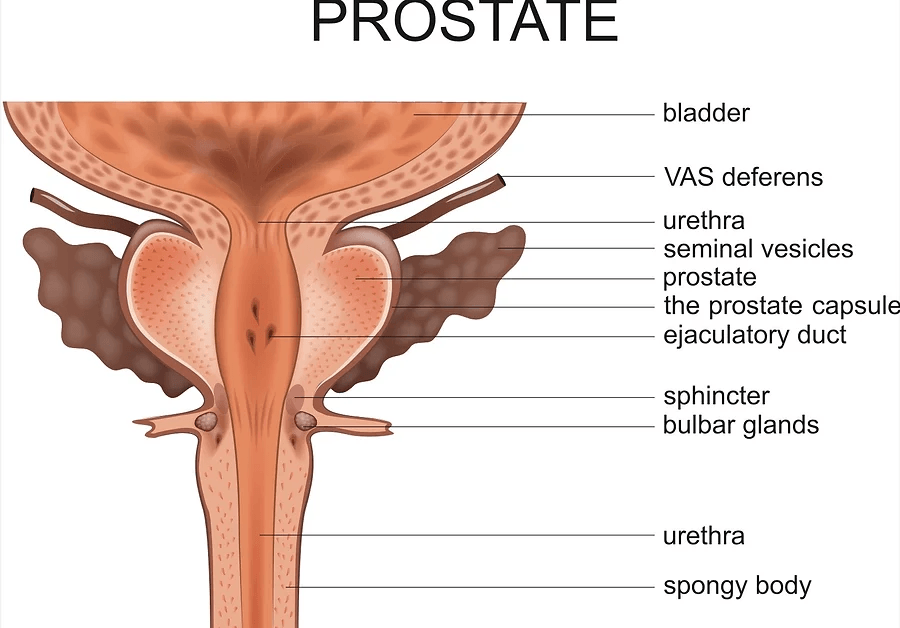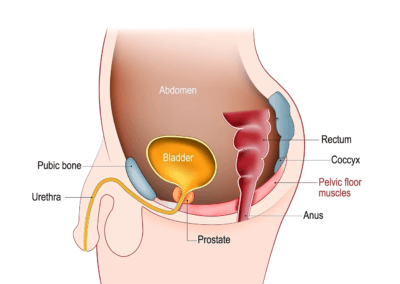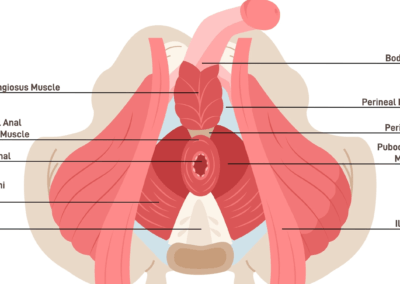Stronger Foundations: Why Men Shouldn't Ignore Their Pelvic Floor Before and After Prostate Cancer Treatment

Pelvic floor therapy is a crucial yet often overlooked component of mens health, particularly in those preparing for or recovering from prostate cancer treatments. Engaging in pelvic floor muscle exercises both before and after treatments can significantly enhance recovery and overall quality of life.
Understanding the Pelvic Floor
If you see both the images above, you can see the pelvis side on and then the muscles from underneath.
The pelvic floor is a group of muscles stretching from the pubic bone to the base of the spine, supporting the bladder and bowel and playing a key role in urinary and sexual function. Strengthening these muscles can help manage and prevent various treatment related issues.
Benefits of Prehabilitation
Initiating pelvic floor muscles exercise training before prostate surgery has been shown too improve postoperative outcomes. A study highlighted that men who do pelvic floor muscle training experienced better urinary continence and reduced incontinence duration post-surgery. (S F Mungovan et al 2021)
Post-Treatment Rehabilitation
After treatments like surgery or radiotherapy, men may face challenges such as urinary incontinence and erectile dysfunction, both of which can have a major impact on quality of life. Men can feel isolated if they have these problems and lose confidence in going to work, exercising and even socialising. Regular pelvic floor exercises x=can alleviate these issues by:
• Improving Urinary Control– Strengthening pelvic floor muscles aids in reducing leakage and urgency. (ProstateCancer.Org)
• Enhancing Sexual Function– Strong pelvic floor muscles can improve erectile function and overall sexual health. (ProstateCancer.Org)
U.K Guidelines on Pelvic Floor Training
Prostate Cancer UK recommends that men start pelvic floor exercises before undergoing prostate surgery and continue afterward to aid in regaining urinary control. They provide detailed guidance on locating and exercising these muscles. You need to be consistent. Join a specialised class for guided exercise.
Common Post-Treatment Problems
Man undergoing prostate cancer treatments may experience:
• Urinary Incontinence– difficulty controlling urine flow.
• Erectile Dysfunction– challenges in achieving or maintaining an erection.
• Bowel Issues– Such as urgency or leakage.
Incorporating pelvic floor exercises can mitigate these side effects, promoting a smoother recovery.
Getting Started with Pelvic Floor Exercises
• Being able to identify the muscles. Probably the most challenging piece of the jigsaw. A study in 2019 found that in healthy young males any of the following verbal instructions could be used to get a contraction of the pelvic floor. “Squeeze your anus”. “Shorten your penis”. “Elevate your scrotum”. “Stop the flow of urine”. You might need to think about each to see what works best for you. (Not Ben Ami et al)
• Exercise Routine. Contract the muscles for a count of three, try holding for a count of three and then relaxing for a count of three. See if you can build up to do 10-15 repetitions, aiming for three sessions daily.
• Consistency is key. It will take regular practice. Guidelines suggest that urinary incontinence caused by prostatectomy should receive supervised pelvic floor muscle training for three months, so improvements are not going to happen overnight.
Get in touch of you would like to book a session to learn how to engage your pelvic floor muscles or join a men only pelvic floor training session. fi@therapyinmotion.co or 07767384983


